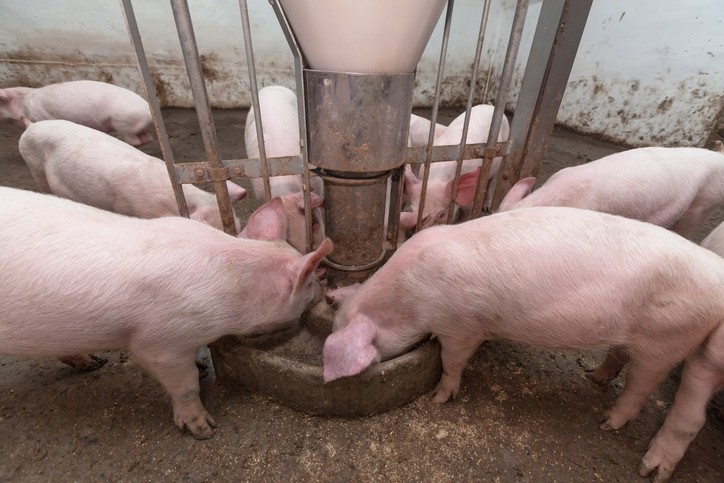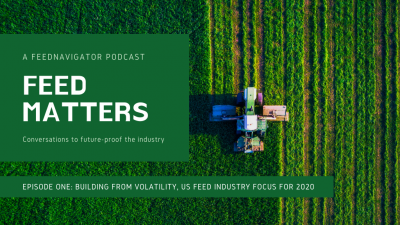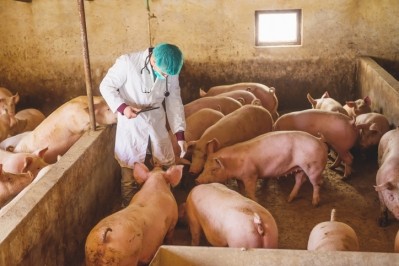US: Feed industry, academic collaboration on safety

The Swine Health Information Center (SHIC) has worked with feed industry organizations like the National Grain and Feed Association and American Feed Industry Association along with the University of Minnesota and Kansas State University to develop the questions for swine producers.
The other organizations were included in the project and given the chance to review questions and provide input, said Paul Sundberg, executive director with the SHIC. “It’s a good example of collaboration with the feed industries to help us work together to make sure that we’re doing the best we can for the health of our animals,” he added.
The questions provide a way to start a conversation between producers and their feed suppliers, he told FeedNavigator. It gives them a way to ask about the origins of the components used in their feeds.
A goal of the project was to help prevent pigs from being infected through feed, he said. However, a better scenario would be to prevent feed ingredients potentially carrying a virus from being imported.
“If [swine producers] can have that assurance that they are negative on the viruses, to begin with, then they can use blockchain … to track and monitor the safety of the feed and know that when it gets to their feed mill or farm that it’s still safe through the process,” said Sundberg. “We don’t want to bring any of those viruses to the country and have feed sitting around with those viruses in them.”
From a feed industry perspective, the effort was a way to discuss and highlight biosecurity practices, said David Fairfield, senior VP of feed services with the National Grain and Feed Association (NGFA). It also facilitates conversations about feed safety.
“From a feed industry standpoint what we were trying to do was emphasis biosecurity practices – that’s high priority in terms of transmission of animal disease if that is through feed, or people, or vehicles or other activities,” he told us. “That’s a real focal point in terms of trying to minimize the movement of animal diseases.”
The discussions also could serve as a way to give producers more confidence in the steps that their feed producers are taking to ensure feed safety, he said.
Questions developed
There can be some variation in the knowledge about feed security steps taken, said Fairfield. The discussions involved in developing the questions sought to help address what practices are in place to assist with feed safety.
“The questions that the pork groups distributed really help facilitate a conversation about feed safety,” he said. “Certainly the point of the questions relates to AFS [African swine fever] or infectious foreign animal diseases but feed safety is broader than that.”
The questions cover the steps already being taken in a feed facility’s biosecurity program, the training employees receive along with the company’s pest control and traceability process, according to information from the SHIC. They also address the way a feed producer approves ingredient suppliers if the facility has any type of third-party certification for feed safety and the origin of the ingredients used.
Giving pork producers a way to start those conversations with their feed producers could help them have more confidence in the steps being taken, said Fairfield.
Looking at disease as a feed risk there are still questions to answer and additional research needs to be done, he said. “There are a lot of data gaps and unknowns to accurately define or evaluate feed risk,” he added.
Although there are some indications that feed and feed ingredients could be a potential source of transmission for some swine viruses like the porcine epidemic diarrhea virus (PEDV) or African swine fever (ASF) more work needs to be done and questions remain, added Sundberg. “The interaction with feed is based on a proof of concept study – one study that we did – we have a lot of confidence in it, but we don’t have any more data than we got from that one experiment,” he added.
“We think the window of opportunity for transport is still open,” he said.
Feed testing, disease and ongoing research
In addition to developing questions for producers, the SHIC also is continuing its work looking at the potential for several foreign animal diseases like ASF to be transmitted through feed, said Sundberg. Some of its ongoing projects include seeing if a virus that has survived a simulated transport period would still be infectious for pigs when eaten.
“We know with PEDV the infective oral dose for a pig in feed is extremely low, very, very low,” he said. “The point is that with PEDV the oral infective dose is very low, now the question is, what are the others?”
The group also is working with Kansas State University to develop a method to take samples from bulk feed, he said.
“One of the things we have going on right now is a project with Kansas State University to work on a method of testing bulk feed that would give us confidence we could find something if there was something in there,” said Sundberg. “Right now there is some possibility, but low confidence that the methods that are used to collect samples from bulk feed to test for chemicals or other contaminants would work.”















